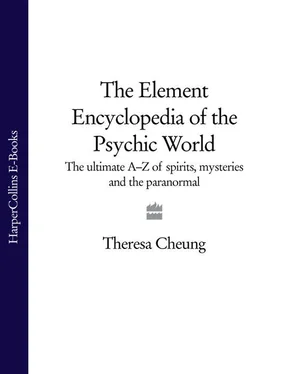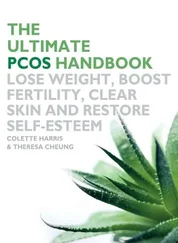By 1918 the Society for Psychical Research concluded that cross correspondences did form large, interlinked groups and were evidence for survival after death. However others, such as another of the Society’s founding members, Frank Pod-more, believed they were the result of telepathic communication among the living.
Interest in cross correspondences faded in the 1930s, and although they do appear now and again in psychical research, today they are not studied with great interest.
Crossroads - the meeting and parting of ways - have long been regarded as likely places for ghostsor other spirit activity to take place. Crossroad superstitionscan be found in Europe, India, Japan and among Native Americans, perhaps because in some parts of the world murderers, sorcerersand suicides were buried at crossroads with a stake or nail driven through the corpse, an act known as ‘nailing down the ghost’ to prevent the ghost’s return. Or perhaps the cross shape of the intersection mimicked the consecrated ground of a churchyard, a burial place denied to murderers and suicides. Or perhaps crossroads were places where territories, routes or villages collided, and they therefore became regarded as meeting places between the spirit realm and earth.
Crossroads are believed to be haunted by spiritswho take delight in leading travellers astray. In German folklore a ghostly rider is believed to haunt a crossroads in Schleswig; the neck of his horse stretches across the path and prevents people passing. In European lore the dead are said to appear at crossroads, and in Welsh legend every crossroad is thought to be inhabited by spirits of the dead on Allhallows Eve. In modern evolutions of the tradition, crossroads in the rural Mississippi Delta area are reportedly frequented by either Lucifer or his minions; wandering musicians and minstrels seeking to bargain their immortal souls for success in their musical endeavours know to go to crossroads to meet with the Devil.
The cross shape of crossroads is in some traditions protection against the spirits that are said to haunt it. For example, in Irish folklore humans who have been kidnapped by fairiesare thought to be able to gain their freedom at crossroads. One German superstitionholds that if you are chased by a ghost or demon, you should head to a crossroads for protection. On reaching the crossroads the spirits will vanish with an unearthly shriek.
CROWE, CATHERINE [C.I1800–1870]
The author of The Night Side of Nature, which is one of the earliest and most important studies of apparitions, Catherine Crowe used a scientific approach to study ghosts. Some contend that her fascination with apparitions may have been brought about by a brief period of insanity, but this does not take away from the fact that her work has often been cited as the model for subsequent investigations of the paranormal.
CROWLEY, ALEISTER [1875–1947]
Called by the media ‘the wickedest man in the world’, Aleister Crowley courted controversy all his life with his fascination for sex, magic and blood. Despite his excesses, there are some who think this English occultist was a truly great magician.
Born Edward Alexander Crowley on 12 October 1875, in Leamington Spa, Warwickshire, Crowley was raised by parents who were members of a fundamentalist Christian sect called the Plymouth Brethren. Crowley was drawn to blood and torture from a young age and was branded ‘the beast’ or Antichrist by his mother when he rebelled against the Brethren.
After leaving Trinity College, Cambridge without a degree but fluent in occultism, Crowley joined the London Chapter of the Hermetic Order of the Golden Dawnand quickly advanced up the ranks. He renamed himself Count Vladimir and began to pursue his occultactivities full-time in London. Stories began to circulate about his alleged supernaturalpowers, including psychic attackson his enemies with demonsand vampires. Whether this is true or not is uncertain, but one thing is clear: he had incredible charisma and presence. A disagreement with another Golden Dawn member forced him to leave London and live in Scotland for a time.
Crowley’s sexual appetite was huge. He married twice but had a number of mistresses, and a seemingly unending stream of willing women were attracted to him. He also had a homosexual relationship with the poet Victor Neuburg, who became his assistant in magic.
In 1912 Crowley became involved in the Oro Templi Orientis occult order, becoming its leader in 1922. From 1915 to 1919 Crowley lived in the US before visiting Italy, where he set up his hillside villa called the Sacred Abbey of the Thelemic Mysteries. The villa became the site for his sexual orgies and magical rites, and the behaviour led him to be expelled from Italy in 1923 by Benito Mussolini.
In his later years Crowley was a victim of poor health, drug addiction and financial trouble. He earned a meagre living from his writing, since much of it is incoherent and rambling, but many continue to read his work today. His most important work, The Book of Law, was allegedly communicated from the Egyptian god Horus’s spirit messenger Aiwass. Central to this book is the Law of Thelma: ‘Do what thou wilt shall be the whole of the law’, which Crowley maintained meant doing what you must do and nothing else. His other important work is Magick in Theory and Practise (1929), which many practitioners consider to be a fine work on ceremonial magic. (He spelled ‘magic’ as ‘magick’ to distinguish it from stage magic.)
Crowley’s other published works include The Diary of a Drug Fiend (1922), The Equinox of the Gods (1937), and the Book of Thoth (1944), which is his interpretation of the Tarot. Two volumes of his autobiography were also published. In 1934 he tried to sue Nina Hammett for her biography of him, Laughing Torso, in which she stated that he practised black magicand human sacrifice, but the jury found in favour of Hammett.
Crowley died on 1 December 1947, in a boarding house in Hastings. His final years were spent practising ritual magic with Gerald B Gardner, whom some call the father of modern Wicca. Even though Crowley has been dead for decades, his influence is still very much felt today. One of the many attractions of Crowley’s type of magic was his advice to follow your own way, become your own self and create your own lifestyle - you don’t need a priest or a judge to tell you how to act; you work it out for yourself. It is easy to see how, in the hands of the young, impressionable or immature, this advice can be misinterpreted and become not only misguided but dangerous.
Information that is forgotten or repressed but which comes to the surface in medi-umshipor contact with spiritsof the dead.
Forgetting information and storing it in the subconscious mind are essential if the conscious mind is to function efficiently and stay uncluttered. However, during tranceor altered states of conscious-ness, forgotten or repressed information may break free from the subconscious and surface again, where it appears as new information to the medium. Psychical researchers always consider the possibility of cryptomnesia when investigating mediums and cases of past-life recall.
Читать дальше


![Theresa Cheung - The Dream Dictionary from A to Z [Revised edition] - The Ultimate A–Z to Interpret the Secrets of Your Dreams](/books/692092/theresa-cheung-the-dream-dictionary-from-a-to-z-r-thumb.webp)









